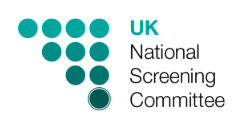April 2024 BSTG meeting notes
Published 9 May 2024
The Blood Spot Task Group (BSTG) held its eighth meeting on 30 April 2024
BSTG members received presentations and updates on the group’s ongoing projects.
1. Modelling
Project title: Identifying challenges, opportunities and practical approaches when developing modelling for rare diseases.
Professor Jim Chilcott gave a presentation on the work undertaken on this project by the Sheffield Centre for Health and Related Research (SCHARR), summarising the many challenges involved developing good quality models in newborn blood spot screening.
Prof Chilcott shared the draft manuscript and asked for comment and feedback. The draft was also shared with members of the expert group set up specifically to work on the project.
The aim is to submit the paper to a journal in early summer and hope for publication later in the summer or autumn.
2. Acceptability of screening
Project title: Acceptability of blood spot screening and genome sequencing in newborn screening
University of Sheffield researchers Duncan Chambers and Susan Baxter presented on their systematic review, commissioned by the National Institute for Health and Care Research (NIHR), into the acceptability of blood spot screening and genome sequencing in newborn screening.
This project covers a wide range of research questions, including whether there are any differences between NBS screening and genomic screening in terms of public acceptability.
Members noted that acceptability of screening is conditional on the provision of adequate consent procedures, timely information and post-screening support.
Duncan and Susan’s draft paper is out for peer review and will be circulated to BSTG members for comment.
3. Test accuracy
Project title: Providing practical recommendations for test accuracy studies for very rare and ultra-rare conditions for consideration in newborn blood spot (NBS) screening.
Silvia Lombardo presented on progress with this project to develop practical recommendations regarding test accuracy study designs suitable for NBS screening.
Delegates at the expert workshop held at the outset of the project emphasised the need for the evaluation of test accuracy study designs to be a continuous process.
Work is now under way to translate and flesh out the key messages from that work into a draft manuscript to submit for publication by the end of the year.
4. Outcomes and data
Project title: Describing how disease registries, data linkages and improved data coding could help provide evidence on rare disease outcomes and other metrics.
Work has now been commissioned to review the methods and mechanisms used to measure and monitor outcomes from newborn screening.
A meeting is being held in mid-May to kick off this project in earnest.
5. Future meetings
The next meeting of the blood spot task group is due to take place in early autumn.

